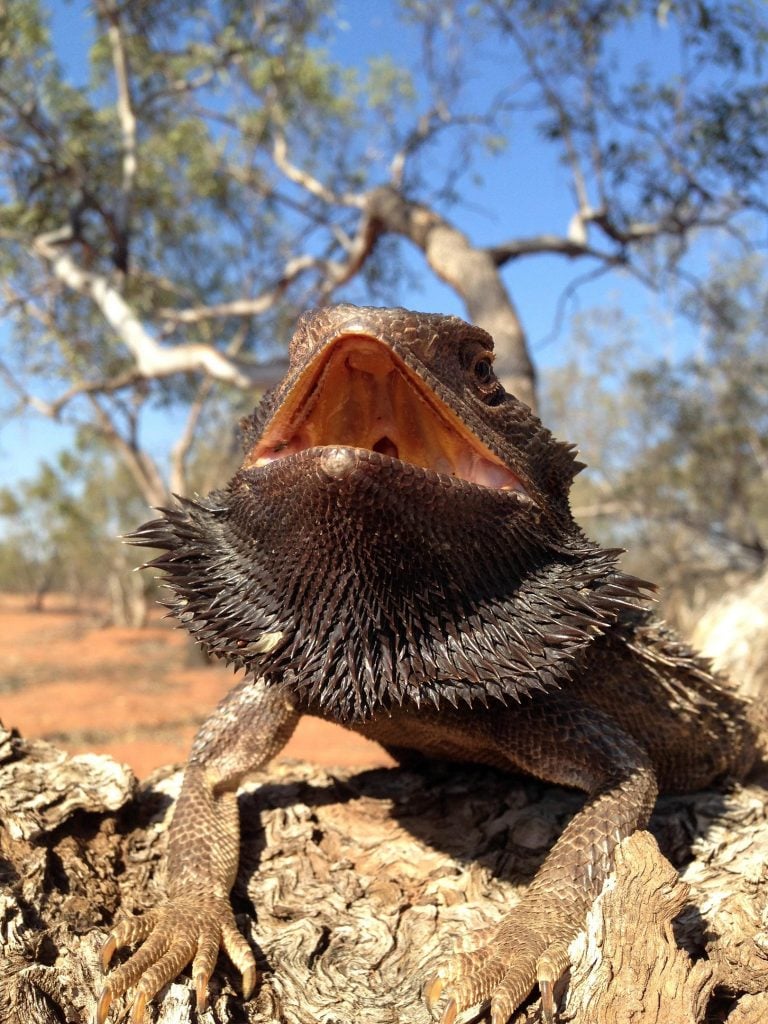
Native to the arid landscapes of Australia, the central bearded dragon (Pogona vitticeps) is a fascinating species. It has genetic sex determination, but when incubated at high temperatures, genetic males sex reverse and develop as females. Credit: Whiteley SL et al., 2021, PLOS Genetics
Bearded dragon embryos become females either through sex chromosomes or hot temperatures.
Ancient cellular processes are likely involved in temperature-dependent sex reversals.
Bearded dragon embryos can use two different sets of genes to become a female lizard — one activated by the sex chromosomes and the other activated by high temperatures during development. Sarah Whiteley and Arthur Georges of the University of Canberra published these new findings on April 15th, 2021, in the journal PLOS Genetics.
In many reptiles and fish, the sex of a developing embryo depends on the temperature of the surrounding environment. This phenomenon, called temperature-dependent sex determination, was discovered in the 1960s, but the molecular details of how it happens have eluded scientists despite half a century of intensive research. Researchers investigated the biochemical pathways required to make a female in the new study by studying this phenomenon in bearded dragons. Male bearded dragons have ZZ sex chromosomes, while females have ZW sex chromosomes. However, hot temperatures can override ZZ sex chromosomes, causing a male lizard to develop as a female.
Whiteley and Georges compared which genes were turned on during development in bearded dragons with ZW chromosomes compared to ZZ animals exposed to high temperatures. They discovered that initially, different sets of developmental genes are active in the two types of females, but that ultimately the pathways converge to produce ovaries. The findings support recent research proposing that ancient signaling processes inside the cell help translate high temperatures into a sex reversal.
The new study is the first to show that there are two ways to produce an ovary in the bearded dragon and bringing us closer to understanding how temperature determines sex. The study also identifies several candidate genes potentially involved in temperature-dependent sex determination. These findings lay the foundation for future experiments to tease out each gene’s role in sensing temperature and directing sexual development.
Whiteley adds, “The most exciting component of this work is the discovery that the mechanism involves ubiquitous and highly conserved cellular processes, signaling pathways and epigenetic processes of chromatin modification. This new knowledge is bringing us closer to understanding how temperature determines sex, so it is a very exciting time to be in biology.”
Reference: “Two transcriptionally distinct pathways drive female development in a reptile with both genetic and temperature dependent sex determination” by Sarah L. Whiteley, Clare E. Holleley, Susan Wagner, James Blackburn, Ira W. Deveson, Jennifer A. Marshall Graves and Arthur Georges, 15 April 2021, PLOS Genetics.
DOI: 10.1371/journal.pgen.1009465
Funding: This work was supported by a Discovery Grant from the Australian Research Council (DP170101147) awarded to AG (lead), CEH and JMG. SLW was supported by a CSIRO Research Plus Postgraduate Award, Postgraduate-scholarships, and a Research Training Scholarship. The funders had no role in study design, data collection and analysis, decision to publish, or preparation of the manuscript.









Be the first to comment on "Temperature-Dependent Sex Reversals in Bearded Dragon Embryos"